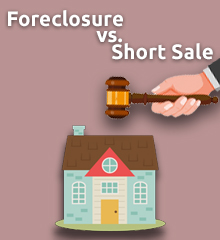Home Equity Loan Scams
What is a home equity loan?
For you to get a loan, the lender usually requires that you give some guarantee that you will pay the loan back. For a home equity loan, you secure the loan with your
home. Typically a home equity loan works like a credit card. It provides you with a revolving credit account that includes a line of credit and a series of checks to access the line.
What is home equity lending fraud?
Home equity lending fraud is different than other types of fraud. Here, unscrupulous lenders seek you out, often by phone or by visiting you at home unannounced. They
trick you into taking a loan against the equity in your home at unusually high interest rates and fees. These lenders offer the loan to you whether you can pay for
it or not. If you don't make your payments, the lender can take your home.
If you don’t pay your loan, you can lose your home!
When you fall behind on your payments, the lender can take your home and your equity through a legal process called foreclosure. The lender then owns your home. At
this point, it is nearly impossible to get your home back.
How to protect yourself
The best protection against home equity fraud is to be an educated consumer. Don't be afraid to ask other people for advice. And watch out for these red flags:
 Documents with blank spaces — For example, the lender gives you papers to sign and the date or the loan amount is left blank.
Documents with blank spaces — For example, the lender gives you papers to sign and the date or the loan amount is left blank.- Door-to-door salesmen offering you easy credit — No reputable lender lends money to "anyone regardless of credit".
- Offers of debt consolidation — While such offers may seem attractive at first (e.g., the lender offers to pay off your credit card bills and your medical bills with the home equity loan), they can turn out to be a very costly "convenience".
- Excessively high interest rates.
- Excessive prepayment penalties — For example, you may be offered a loan contract with a fixed interest rate that requires you to pay a large penalty if you repay the loan early.



 Documents with blank spaces — For example, the lender gives you papers to sign and the date or the loan amount is left blank.
Documents with blank spaces — For example, the lender gives you papers to sign and the date or the loan amount is left blank.